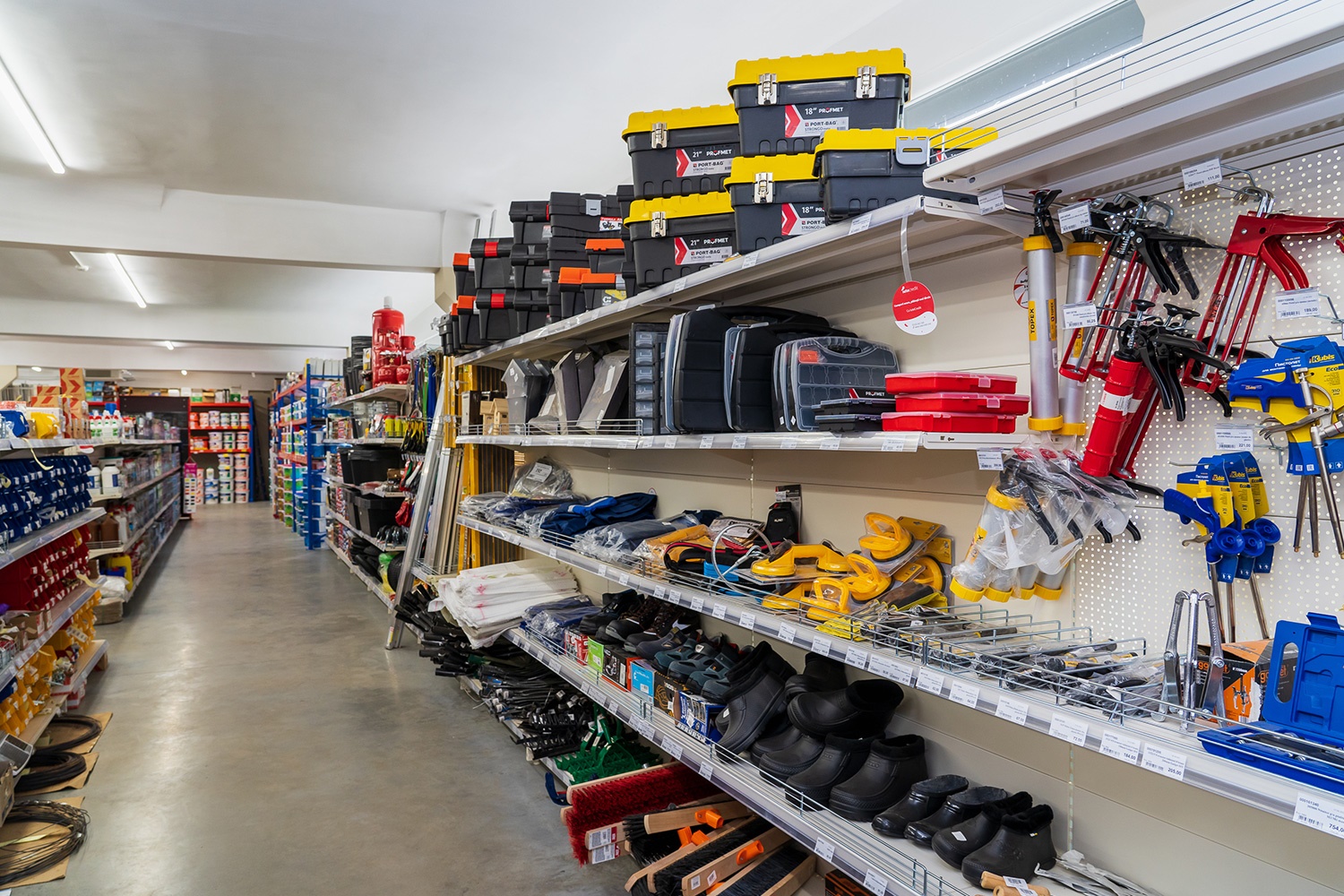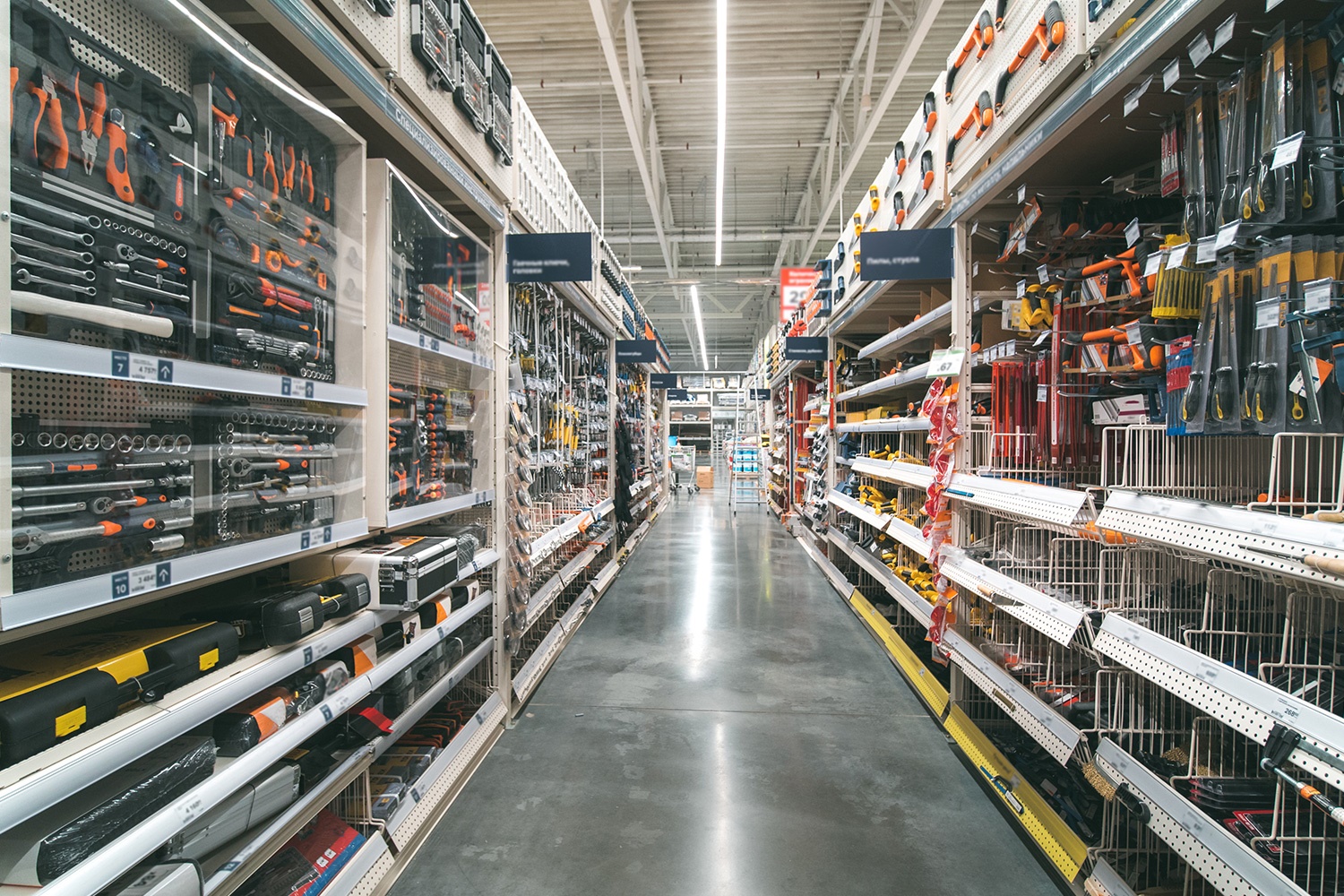There are many products in construction markets, from screwdrivers to lawn mowers, from tiles to garden furniture. Construction market shelving systems are needed to regularly present such diverse product groups to customers.
At this point, construction market shelving systems come into play and increase the comfort of not only businesses but also customers, with both their features and shelf types.
DIY Market Shelving Systems Features
Construction market shelving systems are designed to facilitate access to products in construction markets that offer products in different sizes and categories. General features of shelving systems in construction markets:
- Durable shelving systems are produced for long and heavy products. In this way, the products are stored safely and the shelf life is long.
- Small products such as screws are also available in construction markets. With the additional equipment of the shelves, every small product can be displayed.
- It has high bearing capacity to transport heavy products.
- Some shelving systems offer the ability to adjust each shelf as desired. In this way, when product changes, the shelves can be changed according to the size of the products.
- Shelf systems include designs such as labels on which products can be promoted. In this way, customers can get all the information about the products.


Shelf Types Used in Construction Market Shelving Systems
Super 1-2-3 and unirack medium load storage shelving systems are types that can be used in construction markets for many years with their galvanized structure. All medium-duty products can be easily displayed on these shelves.
Lightweight rack systems can be used for heavy products. With its metal structure, heavy products are stored safely. Producing lightweight rack systems in different colors also provides businesses with the opportunity to choose shelves according to their corporate structure.
Wall units are a preferable shelving system to save space in construction markets. Lightweight products can be displayed on these shelves. Additionally, there are additional spaces such as hangers and baskets in the wall units. In this way, many product groups can be placed, from small products to products that need to be hung.




